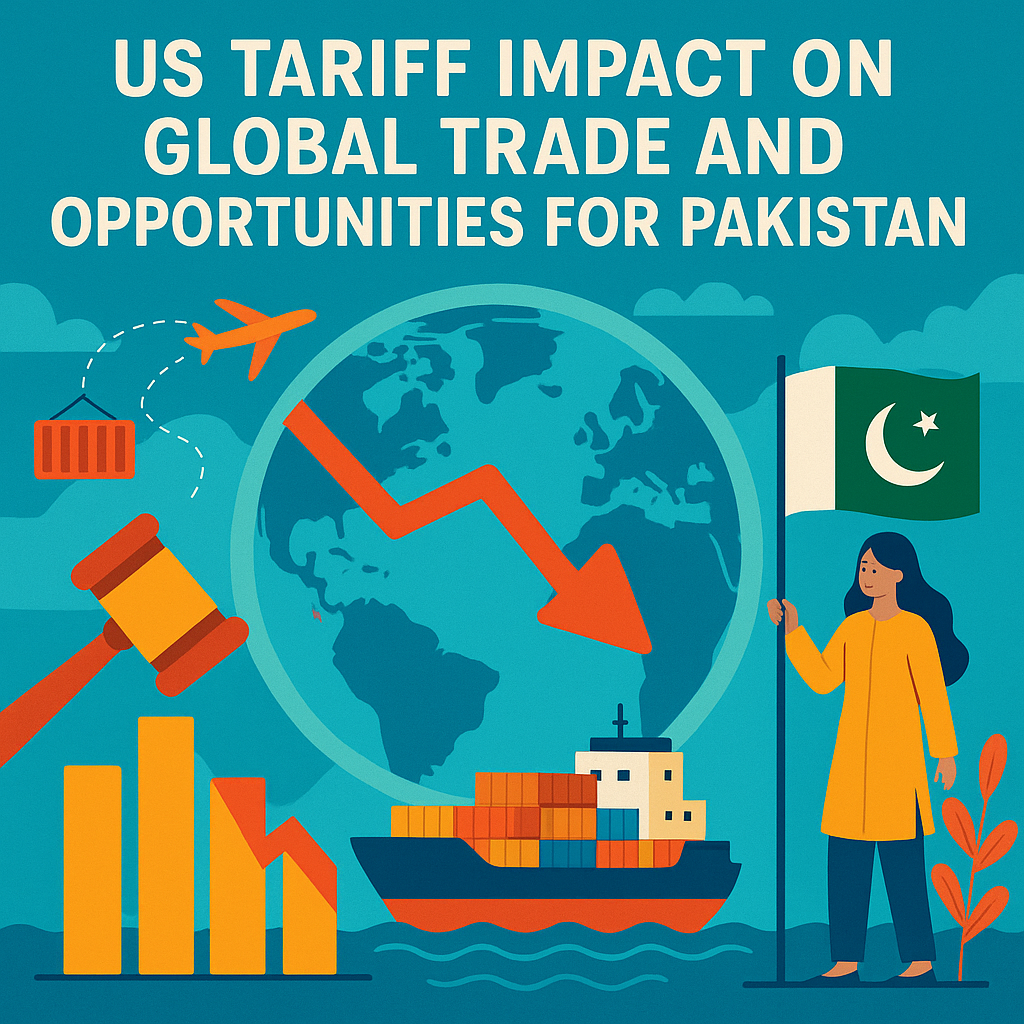
The global trade landscape is undergoing a seismic shift as the United States recalibrates its tariff policies, leveraging duties as both economic tools and geopolitical instruments. From the Trump-era tariffs on $370 billion of Chinese goods to the Biden administration’s selective extensions targeting steel, aluminum, and green technology, these measures have rippled across supply chains, reshaped multilateral alliances, and created pockets of opportunity for agile economies. For Pakistan—a nation grappling with trade deficits and stagnant exports—this disruption presents a strategic inflection point. By aligning policy reforms with emerging gaps in global markets, Pakistan can position itself as a competitive alternative in textiles, agriculture, IT services, and sourcing diversification, transforming tariff-induced challenges into catalysts for growth.
The U.S.-China trade war, initiated in 2018, remains the most consequential tariff policy, redirecting $165 billion in trade flows away from China by 2023. Industries such as electronics, apparel, and machinery have sought refuge in Southeast Asia and South Asia, with Vietnam and Bangladesh capturing 32% of diverted textile exports. However, rising labor costs in these markets and lingering U.S. tariffs on Chinese inputs (e.g., cotton, synthetic fibers) create openings for Pakistan. The country’s textile sector, which contributes 60% of its exports, is uniquely positioned to capitalize on this realignment. With the U.S. importing $23 billion worth of textiles from tariff-affected countries in 2023, Pakistan’s cost-competitive garment industry—bolstered by GSP+ status granting duty-free access to the EU—could aggressively target the U.S. market. Strategic investments in high-value segments like technical textiles (a $170 billion global market) and eco-friendly manufacturing could further differentiate Pakistani exports, aligning with U.S. buyers’ increasing sustainability mandates.
Agriculture offers another frontier. U.S. tariffs on $3 billion of Indian and Turkish agricultural products in 2023-24, including rice and nuts, have disrupted supply. Pakistan, the world’s fourth-largest rice exporter, shipped 3.5 million tons in 2023 but captured just 2% of the U.S. rice market. By contrast, India—despite tariffs—holds a 35% share. Enhancing phytosanitary standards and marketing aromatic basmati rice through targeted trade fairs could help Pakistan penetrate this $1.8 billion U.S. niche. Similarly, tariffs on Chinese fertilizers and farm equipment (averaging 25%) have spiked global prices, creating demand for Pakistan’s urea exports, which surged by 40% in 2023. Policy reforms to streamline export approvals and reduce domestic hoarding could amplify this advantage.
In the digital realm, U.S. tariffs on Chinese tech imports have accelerated the “decoupling” of IT supply chains, with American firms diversifying software development and BPO services to mitigate risks. Pakistan’s IT exports, which grew by 24% to $2.6 billion in 2023, remain underleveraged in the U.S. market, capturing less than 1% of its $400 billion IT services imports. Establishing U.S.-compliant data protection laws and expanding PayPal access could attract outsourcing contracts, particularly in fintech and AI—sectors where Pakistani firms like Careem and Afiniti have already demonstrated global competence.
Beyond sector-specific gains, broader trade diversification is imperative. The U.S. Inflation Reduction Act (IRA) and CHIPS Act, which prioritize allies in critical mineral supply chains, offer avenues for Pakistan’s untapped lithium reserves in Khyber Pakhtunkhwa. Developing a lithium refining ecosystem, coupled with bilateral critical mineral agreements, could integrate Pakistan into battery supply chains, mirroring Chile’s success in securing U.S. partnerships. Similarly, the U.S.-led Indo-Pacific Economic Framework (IPEF), though excluding Pakistan, underscores the importance of regional alliances. Accelerating CPEC’s second phase to enhance export infrastructure—such as Gwadar’s deep-sea port—would position Pakistan as a gateway for U.S. firms seeking China+1 sourcing strategies.
Realizing these opportunities demands urgent domestic reforms. Simplifying the tariff structure to reduce input costs for exporters, as Vietnam did ahead of its 2023 U.S. trade surge, is critical. The Federal Board of Revenue’s cumbersome refund system, which delays $1.2 billion annually in export rebates, must be digitized to improve liquidity. Trade diplomacy should prioritize a bilateral investment treaty (BIT) with the U.S., resolving long-standing disputes over intellectual property and arbitration to boost investor confidence. Lastly, leveraging the Green Alliance Framework announced in 2023, Pakistan could negotiate tariff exemptions for eco-friendly textiles and renewable energy equipment, aligning with U.S. climate objectives.
The window for action is narrowing. As global trade fractures into blocs, Pakistan’s ability to adapt will determine its relevance in the new economic order. By transforming its industrial base, upgrading trade infrastructure, and forging strategic partnerships, Pakistan can transcend its current role as a peripheral player, emerging as a resilient node in the recalibrated global supply chain—proving that even in an era of protectionism, agility and foresight can turn turbulence into opportunity.
This article was published on publicfinance.pk.
